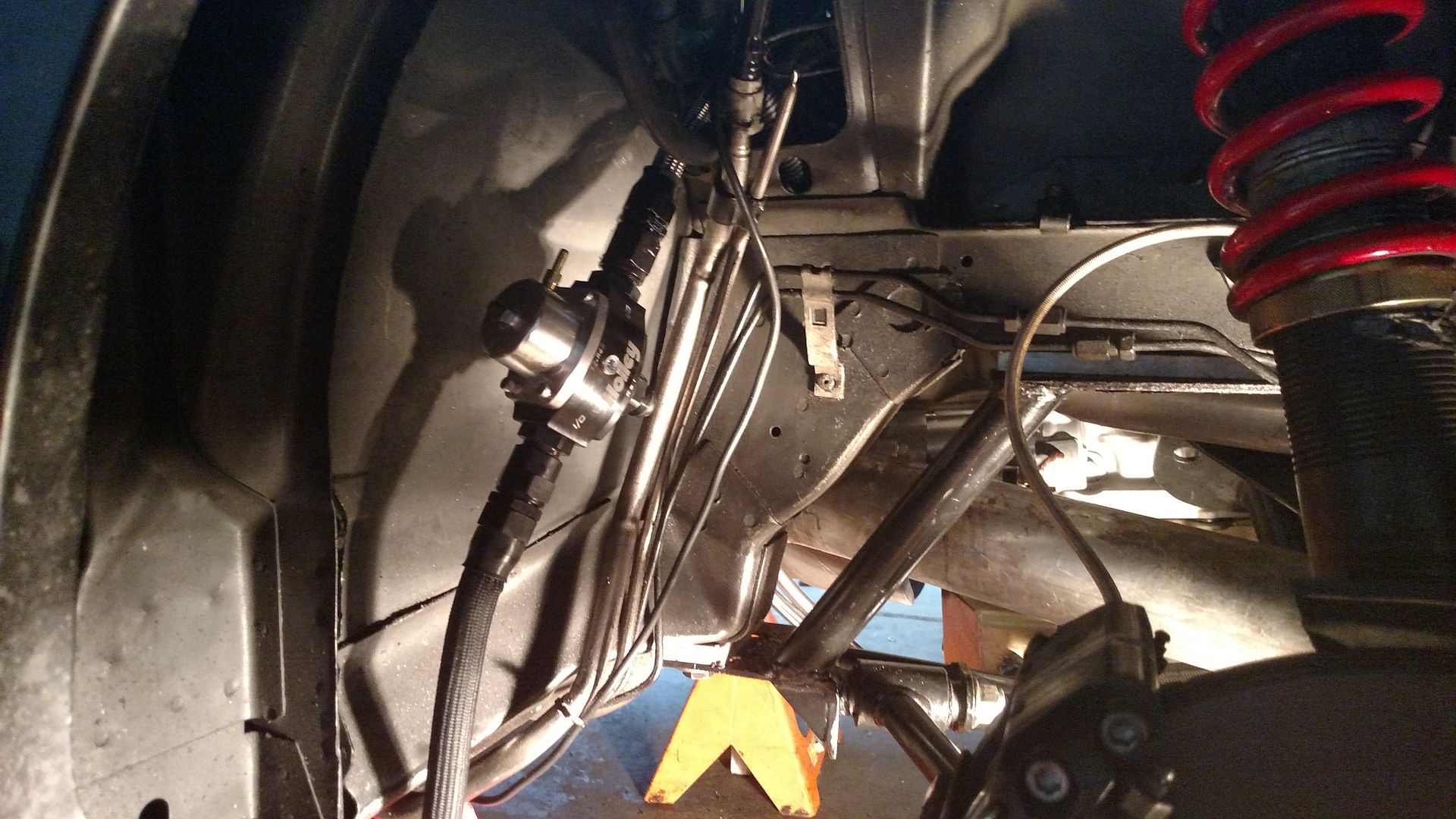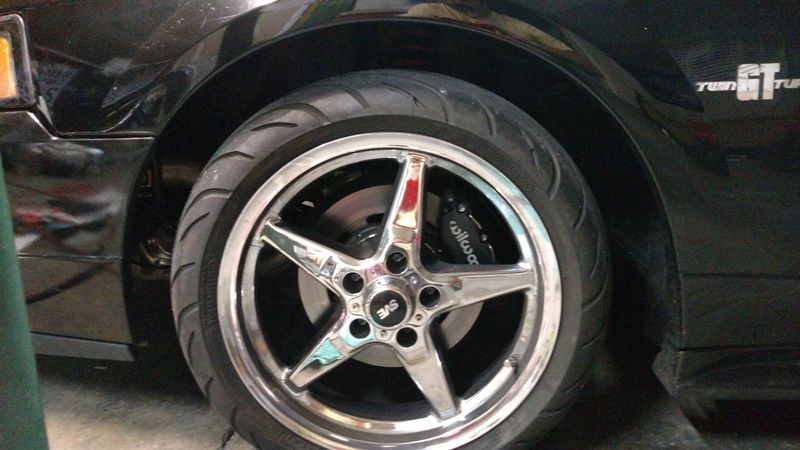Currently my car has your standard return setup with a -10 feed to both rails, front of the rails go to the regulator and then returned back to the tank.
Fuel system components consist of.
Glenns Sleeper tank with dual externally mounted Bosch 044s ran at all times (no hobbs)
-10 Feed -8 return
ID 1000s.
Fuel lab regulator with 1/2" return port.
My car is going to go through some changes this season and I wanted to clean up the look in the engine bay a bit and move the regulator as well. Its currently mounted on the the driver side valve cover. I was thinking of switching to a dead head return setup, feeding the regulator then feeding the rails from there and capping off the other side of the rails. Some claim lower fuel temps but some also claim some tuners HATE this method. Will there be any negative effects going to a dead head setup with my current setup? I will be mainly running Pump 93/Torco mix and sometimes E85.
Fuel system components consist of.
Glenns Sleeper tank with dual externally mounted Bosch 044s ran at all times (no hobbs)
-10 Feed -8 return
ID 1000s.
Fuel lab regulator with 1/2" return port.
My car is going to go through some changes this season and I wanted to clean up the look in the engine bay a bit and move the regulator as well. Its currently mounted on the the driver side valve cover. I was thinking of switching to a dead head return setup, feeding the regulator then feeding the rails from there and capping off the other side of the rails. Some claim lower fuel temps but some also claim some tuners HATE this method. Will there be any negative effects going to a dead head setup with my current setup? I will be mainly running Pump 93/Torco mix and sometimes E85.








